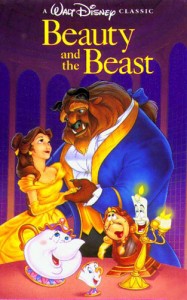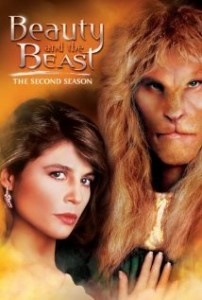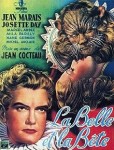RESTORING ‘STORY’ TO ITS RIGHTFUL POSITION…
 SADLY, THE DICTIONARY’S definitions for “story” begin with such dull descriptors as “a factual or fictional narrative,” “the plot of a novel, play, motion picture, or other fictional narrative work,” and “an account of fictional or factual events.”
SADLY, THE DICTIONARY’S definitions for “story” begin with such dull descriptors as “a factual or fictional narrative,” “the plot of a novel, play, motion picture, or other fictional narrative work,” and “an account of fictional or factual events.”
Oh yes, some in Hollywood do settle for the above definitions of story — including many of the much-promoted screenplays that are still cycling in “turnaround,” are moving from agency to investor to agency to investor, or have been produced… to lackluster results.
However — based on audience turnouts, box-office results and audience-satisfaction surveys — far too many of this decade’s “hot” scripts have turned out to be barely narratives, mostly “full of sound and fury signifying nothing.” Plots with little point or purpose, and/or accounts that actually count for nothing.
So, is that all you want your movie stories to be? Of course not!
Whether you’re a writer or a producer, when you pitch (or hear) a screenplay idea,  don’t you really want it to be much more than just the boring banalities above? Especially if you are hoping to make loads of money and reputation off this idea?!?
don’t you really want it to be much more than just the boring banalities above? Especially if you are hoping to make loads of money and reputation off this idea?!?
Naturally!
You want the “story” you are pitching (or hearing) to be brimming with emotion, riveting in its suspense, hilarious in its ironies, roiling in its conflict, and scrupulously satisfying in its ending — at the very least! Certainly not just being “a narrative” or “an account…”
We have to stop accepting the above bland definitions for “story,” since they do great disservice to the top stories we actually cherish! Which pretty much always include strongly emotion-evoking non-negotiables like:
- a manageable bunch of engaging, multi-layered characters, with relatable goals and issues both objective and subjective, both intelligent and passionate;
- structure, both during and in retrospect, that shows the story was a well-fitted, carefully interrelated puzzle from beginning to end;
- eight discernible character and situation dynamics that keep producing insightful growth, sudden change, altered stakes, and unforeseeable outcomes;
- various “real-feeling” character worldviews and instincts that gradually reveal the story’s “actual” subject matter and meaning (its theme/s);
- sequencing in the plot presentation that establishes cause-and-effect correlations which seem reasonable (yet never bland), and also unfolds the story’s underlying thematic emphases effectively — so we only learn what we need to know when we need to know it, and “understand it all” at just the right time;
- sufficient “genre” beats to satisfy our a priori expectations, yet that “play with” the specific genre enough so we can’t accurately predict this genre piece’s ending or meaning until it is all delivered.
 So, the above constitutes a definition of “story” that I insist on in my consulting — a definition used by the Dramatica Institute of Narrative Science (in which I am an ongoing student), where they call a story that meets the above criteria a “Grand Argument Story.”
So, the above constitutes a definition of “story” that I insist on in my consulting — a definition used by the Dramatica Institute of Narrative Science (in which I am an ongoing student), where they call a story that meets the above criteria a “Grand Argument Story.”
The shortest definition of a Grand Argument Story is: “A conceptually complete story with both an emotional and logical comprehensiveness.”
As you can tell from the six non-negotiables above, this is not taking “conceptually complete” and “comprehensiveness” lightly.
And we never should take such terms lightly, because the proper kinds of stories (with their carefully constructed, underlying “storyforms”) are the most-valuable life-shaping tools in our possession!
Indeed, the storyform “blueprints” that make those stories work and work and WORK should be preserved, dwelt upon, meditated over, and incorporated again and again into successive enduring stories for successive generations!
Many a major writing success shows this: West Side Story and Romeo and Juliet share the same meaning/storyform, though they are set in far-different centuries, locations and cultures. The same goes for a different storyform that’s shared by Cyrano de Bergerac and Roxanne, and a third storyform that’s basically shared by all the different movie and TV iterations of Beauty and the Beast (at least to some degree, though the TV versions have frequently been less superior).
 So, three different storyforms, yet each of the resulting stories fulfills the “non-negotiables” criteria to be classed as a “story”/Grand Argument Story.
So, three different storyforms, yet each of the resulting stories fulfills the “non-negotiables” criteria to be classed as a “story”/Grand Argument Story.
And beyond these three are thousands more carefully nuanced storyforms to choose from — a literal myriad of dynamic meanings, modes, motivations, messages, character types, etc., all to help you write a story that will grab hold and last!
From henceforth, then, whenever I write about “stories,” I am talking about Grand Argument Stories — and any other narratives, accounts or chronicles I will call mere “tales,” just to keep the “story” bar raised to where we all really need it to be.


love it. i wanna learn as much of this as possible!
Thanks, loyal Garrett, and I hope you’ll recommend this on to other “great-story” fans you know! If everybody uses this stuff, modern movies and TV can do nothing but benefit, as more and more writers raise the tide that will lift all boats.